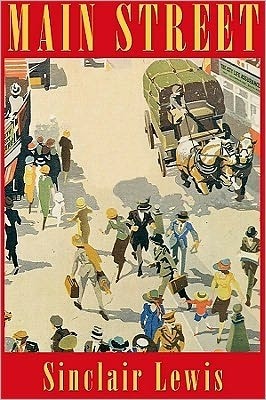What do you think?
Rate this book


Audio Cassette
First published October 23, 1920
"The effect of her being on those around her was incalculably diffusive: for the growing good of the world is partly dependent on unhistoric acts; and that things are not so ill with you and me as they might have been is half owing to the number who lived faithfully a hidden life, and rest in unvisited tombs."And here's Carol Milford:"I may not have fought the good fight, but I have kept the faith."
She had fancied that her life might make a story. She knew that there was nothing heroic or obviously dramatic in it, no magic of rare hours, nor valiant challenge, but it seemed to her that she was of some significance because she was commonplaceness, the ordinary life of the age, made articulate and protesting.These are characters who find fulfillment in making it through a real life with a semblance of self-respect. That's grown-up stuff. I mean, not that I'd know, but that's what I hear from old people.